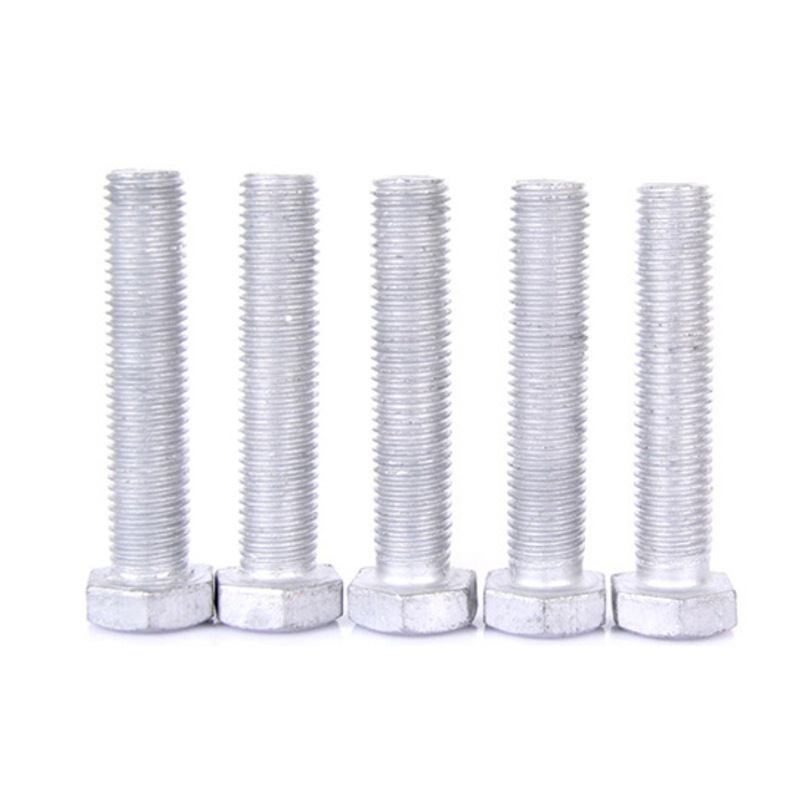

machine bolt and stud bolt
Nov . 17, 2024 15:34 Back to list
machine bolt and stud bolt
Understanding Machine Bolts and Stud Bolts Essential Fasteners in Engineering
In the realm of engineering and construction, fasteners play a crucial role in ensuring the integrity and safety of structures. Among the myriad of fasteners available, machine bolts and stud bolts are two prominent types that serve specific purposes. Understanding their characteristics, applications, and differences can aid engineers and designers in choosing the right fastener for their projects.
What are Machine Bolts?
Machine bolts are a type of fastener that typically features a flat or rounded head and are designed to be used with nuts or other threaded components. They are characterized by their fully formed threads that extend along the shaft, allowing for a strong connection when tightened with a corresponding nut. Machine bolts come in various sizes, materials, and strength ratings, making them versatile for different applications.
The main applications of machine bolts include fastening metal plates, connecting machinery components, and assembling structural frameworks. They are commonly used in construction, automotive, and manufacturing industries where high strength and durability are required. For instance, in automotive assembly, machine bolts are critical in securing engine components and ensuring overall vehicle stability.
What are Stud Bolts?
On the other hand, stud bolts are elongated fasteners that consist of threads on both ends with a smooth, unthreaded center. Unlike machine bolts, stud bolts are not designed with a head, which gives them a unique advantage in specific applications. Stud bolts are typically installed by threading one end into a designated hole while allowing the other end to remain accessible for additional attachments, such as nuts or other components.
machine bolt and stud bolt

Stud bolts are frequently used in high-pressure applications, such as pipelines, tanks, and flanges where a secure and leak-resistant connection is crucial. Their design facilitates even distribution of tension and allows for various configurations in assembly, making them exceptionally useful in various industrial applications, particularly in the oil and gas sector, as well as other petrochemical industries.
Key Differences between Machine Bolts and Stud Bolts
While machine bolts and stud bolts may seem similar at first glance, they differ significantly in design and application. The most striking difference is the presence of a head on machine bolts, which allows for straightforward installation and removal using tools such as wrenches or impact drivers. Conversely, the absence of a head on stud bolts means that they are often installed in tight spaces where conventional fasteners cannot fit.
Furthermore, the load distribution differs between the two types of bolts. Machine bolts tend to exert force primarily at the point where the bolt head meets the surface, whereas stud bolts facilitate a more uniform distribution of tension, reducing the risk of material deformation, especially in high-stress applications.
Conclusion
Choosing between machine bolts and stud bolts ultimately depends on the specific requirements of the application at hand. Engineers and designers must consider factors such as load-bearing capabilities, installation space, and connection types when selecting the appropriate fastener. Both machine bolts and stud bolts are integral to the functionality and durability of constructed assemblies, significantly contributing to safety and performance in various engineering fields. Understanding their features and applications ensures that projects benefit from the right fastening solutions, supporting the overall integrity and success of engineering endeavors.
Latest news
-
Hot Dip Galvanized Bolts-About LongZe|High Strength, Corrosion Resistance
NewsJul.30,2025
-
High-Strength Hot Dip Galvanized Bolts - Hebei Longze | Corrosion Resistance, Customization
NewsJul.30,2025
-
Hot Dip Galvanized Bolts-Hebei Longze|Corrosion Resistance&High Strength
NewsJul.30,2025
-
High-Strength Hot-Dip Galvanized Bolts-Hebei Longze|Corrosion Resistance&High Strength
NewsJul.30,2025
-
Hot Dip Galvanized Bolts-Hebei Longze|Corrosion Resistance&High Strength
NewsJul.30,2025
-
Hot Dip Galvanized Bolts - Hebei Longze | Corrosion Resistance, High Strength
NewsJul.30,2025

